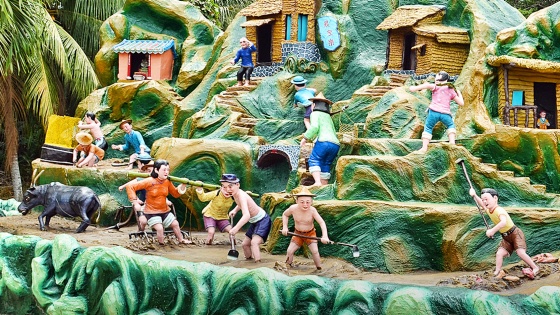Haw Par Villa
Haw Par Villa
Blog Article

Overview
Haw Par Villa, often known as Tiger Balm Gardens, is definitely an legendary topic park situated in Singapore. This one of a kind attraction offers visitors a glimpse into Chinese mythology and folklore through its breathtaking and intricate statues, dioramas, and reveals. Let's choose a more in-depth look at the key features of this interesting place.
Historical past:
Haw Par Villa was originally built by Aw Boon Haw, the magnate at the rear of the popular Tiger Balm ointment. The park opened its doorways in 1937 as a means to both equally entertain and educate individuals about traditional Chinese values, heritage, and beliefs. All over the a long time, it's got gone through a number of renovations but has managed to keep its unique attraction.
Mythological Figures:
On the list of major highlights of Haw Par Villa is its large selection of statues depicting characters from Chinese mythology and legends. Readers will come across figures like Journey into the West's Sun Wukong (the Monkey King), Eight Immortals from Daoism, as well as critical deities such as Guanyin (Goddess of Mercy) and Buddha Shakyamuni.
Concept Parks within just Haw Par Villa:
Inside Haw Par Villa by itself are many distinct regions or sections:
10 Courts of Hell: Perhaps The most intriguing parts of Haw Par Villa is exploring "The Ten Courts of Hell." Listed here people can witness graphic scenes depicting punishments for various sins depending on classic Chinese beliefs about afterlife retributions.
Taoist-Mythology Sculptures: This space showcases amazing sculptures depicting tales from historic Taoist myths. These vivid artworks convey to lifestyle tales which have been passed down via generations in vivid detail.
Garden Sceneries: Past mythological sculptures lie serene gardens filled with picturesque landscapes adorned with beautiful bouquets and vegetation—an ideal space for visitors to relax amidst mother nature's magnificence or delight in an informal stroll.
Teochew Opera Centre: The Teochew Opera Centre is a traditional theater location that on a regular basis hosts performances on the Teochew opera, a substantial form of Chinese musical drama with unique regional traits in its costumes, new music, and storytelling.
Cultural Significance:
Haw Par Villa retains enormous cultural importance as it provides a possibility to check out different components of Chinese tradition, folklore, and spiritual beliefs. website It serves as equally an open up-air museum plus a place for communal pursuits like festivals or instructional packages enabling visitors to achieve insights into historic Chinese traditions.
Moreover, the park's initial intention was to coach site visitors about ethical values as a result of vivid depictions of heaven and hell – gratifying virtue and condemning vices. So Haw Par Villa functions as not just an amusement park but in addition a ethical guide teaching critical moral ideas from common Chinese philosophy.
Contemporary Relevance:
Even with staying built decades back, Haw Par Villa proceeds to attract locals and travelers alike on account of its uniqueness and timeless attractiveness. The park has managed to Mix tradition with modern factors by organizing occasions like art exhibitions, lantern festivals throughout mid-autumn celebrations showcasing the fusion in between contemporary aesthetics and traditional themes related to the villa.
In recent years, there have been endeavours by authorities to refurbish portions of the attraction even though making certain its historic authenticity. This ongoing upkeep ensures that Haw Par Villa continues to be available for generations to return when preserving its prosperous heritage value.
Summary:
Haw Par Villa stands out amongst Singapore's sights for its immersive practical experience into mythical realms by intricately-made sculptures depicting deities, legends, morality tales and punishments in Taoist mythology-impressed gardenscapes - all inside of a reflective natural environment emphasizing existence classes based upon compassion shown toward Other individuals as it conveys ancient wisdom guided by moral principles conducive for self-enhancement Found amidst gorgeous scenic landscapes rendering it appropriate both of those for cultural exploration fanatics serious about China's large mythology/heritage/backgrounds/legends simultaneously(proporotinately with because of rverence toward central theme of representing classic Chinese society and beliefs).